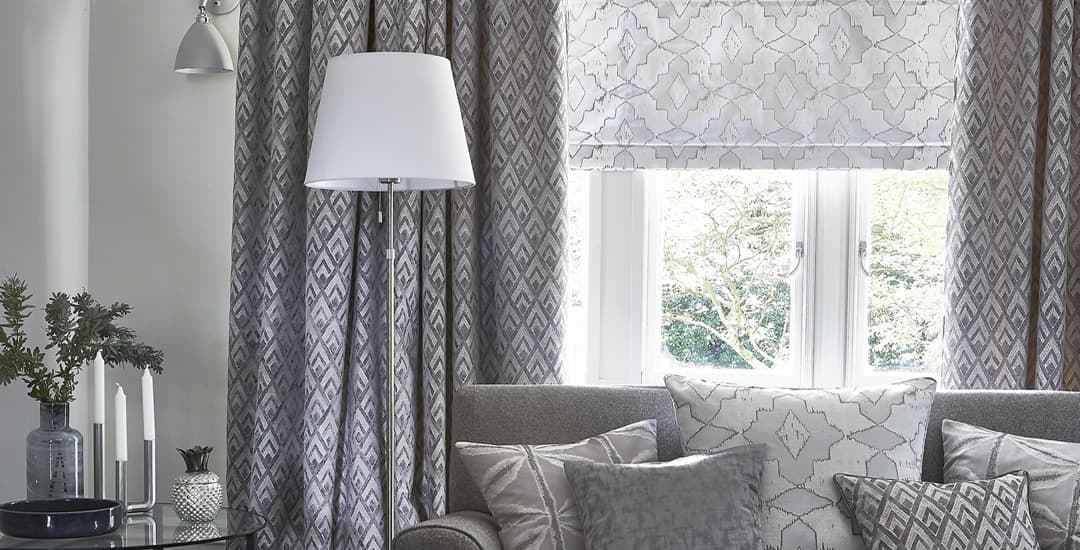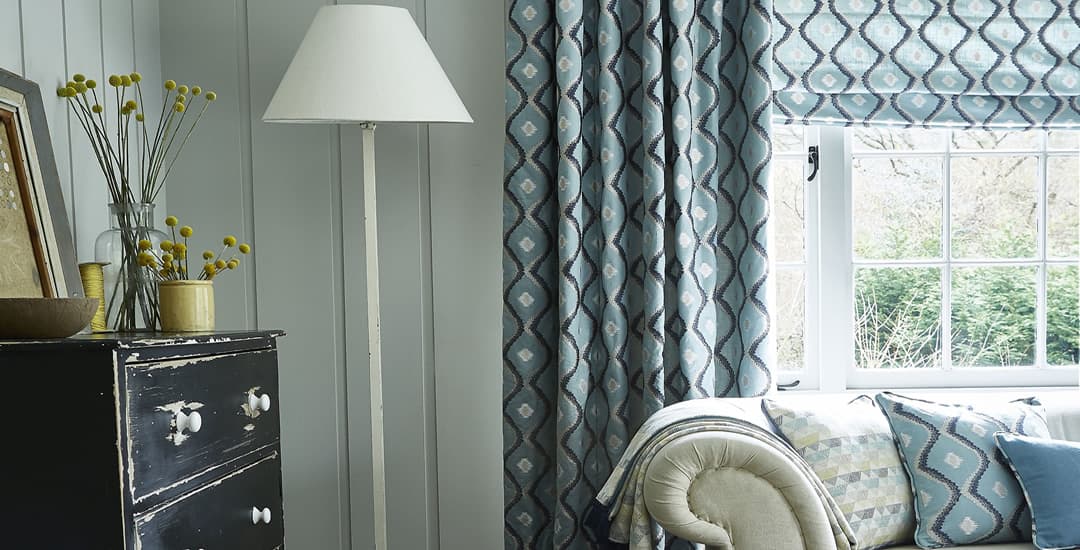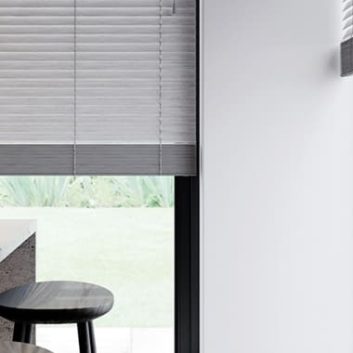
Should I use curtains with blinds? Really there’s only one specific situation in which the answer to this is generally a resounding “yes,” and that is if you need to achieve a blackout effect within the room that is totally impenetrable and doesn’t allow even the smallest amount of light from outside to get in.
In this situation, you’d use a blackout blind inside of the window recess, and blackout-lined curtains over the window recess; or you could use a second blackout blind in place of the curtains if you wished, so there are a couple of options!
Aside from that, how you combine dressings on any given window relies solely on what you want to do. Curtains and blinds work together to achieve a fairly formal or elegant/highbrow look if combined, and so for a grand or formal room, this might be exactly what you want.
The ultimate finish you achieve will of course rely on your choice of both curtains and blinds; between the two, you’ll have a lot of options, but also possibly too much choice in some ways, or face potential issues getting the right match across two different materials and window treatment styles.
In this blog post, I’ll add a bit more detail to the points above, and a few related issues too.
Should I use curtains with blinds if I want a full blackout in my room?
Yes, this is a common and effective way to use curtains and blinds together. You can, as mentioned, use two blinds, but one set of curtains with one set of blinds is perhaps a more common approach, and gives you a lot of flexibility and essentially the best of both worlds.
While it is not my job to dictate your choices with a “should,” I use curtains with blinds in my bedroom but not anywhere else in my home, this being what I find most effective at preventing the sun waking me up on Sunday mornings before my hangover is good and ready to make itself known in its own time.
Should I use curtains with blinds in a formal room?

This one isn’t a “should” question for me. If you’re using your window and whatever you hang over it as a style statement or integral part of the design or mood of your room, curtains with blinds (depending on those you pick) can serve as an impressive and possibly even dramatic visual.
The curtains, when open, “frame” a closed blind, and you can choose contrasting or complementary designs, add features like tiebacks and pelmets, and if you wish, achieve a very formal and grand finish.
However, Roman blinds as a standalone choice also have a lot going for them for formal, elegant, and chic spaces, and so using curtains with blinds is one option, but not the only one.
Do curtains and blinds work together to improve a room’s insulation?
Yes; the more layers you have over a window, the better the insulation of the window will be. This effect will be particularly dramatic if your blind and curtains alike are both thermally insulated.
However, unless your room is very, very cold and all or most of that cold comes from the window (rather than internal drafts or overall poor home insulation) a thermally insulating blind alone, hung inside of the window recess, will tend to be sufficient for most.
Can you put curtains and blinds in the same room on different windows?
Yes, in terms of the fact that nobody is stopping you from doing this, and if you like the look achieved, then that’s absolutely fine. However, curtains on one window and then blinds on another in the same room can be a bit of a reach in terms of achieving a cohesive or put-together finish, although there are always exceptions.
One example of this I have seen that worked well was in a living room that had three large windows and one tiny one (smaller than downstairs bathroom-sized), the latter of which would have looked comedic and swamped by even the smallest pair of curtains.
The three larger windows all had matching (purple/lilac) sets of curtains, and a small roller blind in the same fabric was used over the tiny window, and it looked perfectly good as the uniformity of the fabric created the theme.




